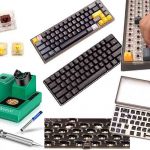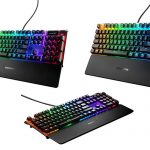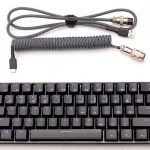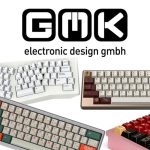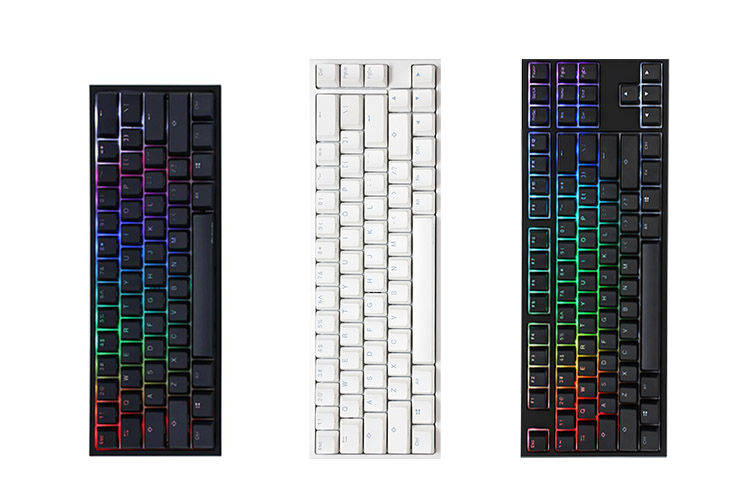
If you are new to the mechanical keyboard hobby, then you might be overwhelmed with the number of different sizes that are available.
The different keyboard sizes vary on the number of keys used. Full-size keyboards contain all the standard keys. But smaller sizes such as 60% and 65% keyboards omit some of the less-used keys to make the keyboard more compact.
In this article, we will be going through some of the common keyboard sizes that you will find with prebuilt keyboards, gaming keyboards, and custom mechanical keyboards.
We will be breaking down the sizes into three categories: standard, enthusiast, and non-standard.
Different Keyboard Sizes
Standard Keyboards
Full-Size Keyboard (100%)

To kick things off, let us start with full-size keyboards. This is the default keyboard size that is commonly seen with the majority of the keyboards. They feature 104 keys which include the home cluster, number pad, F-keys, arrow keys, etc.
There are lots of advantages to full-size keyboards. It is a layout that almost everyone is familiar with, meaning it will virtually have no learning curve if you choose to buy a brand new full-size keyboard.
Also, it is a layout that works best with different use cases. The number pad will work great for data entry, while the F-keys will work great for video editors and other creative professionals. And for those who like to tinker and reprogram their keyboards, then you have 104 keys to play around with.
And if you are looking for unique features, especially gaming-related ones, you will most likely find them with full-size keyboards. Most flagship gaming products that have features such as digital dials, dedicated macro keys, USB and audio passthrough, proximity sensors, etc.will most likely be found on full-sized keyboards.
In terms of reliability, this layout has been tried and tested for many years. The modern 104 key layout was first seen in the IBM Model M that was first released in 1985. And since then, full-sized keyboards have been the go-to size for gamers and professionals.
But with that said, full-size keyboards have been getting less popular in the past couple of years. This is mostly because full-size keyboards aren’t the most efficient or ergonomic form factor.
Gamers and more casual users aren’t utilizing the number pad that much. This means that a large part of the keyboard is just wasted space. This is why smaller form factor keyboards such as TKL, 75%. And 65% have been dominating the market.
Of course, if you are someone who absolutely needs the number pad, then you will still find modern keyboards with this feature. However, if you want to dive deeper into the custom keyboard scene, then, unfortunately, you might have to check out other sizes.
Tenkeyless Keyboard (TKL)

The Tenkeyless (TKL) form factor is a downsized version of full-sized keyboards. The only difference between TKL and full-sized keyboards is that TKL keyboards do not have a number pad and only have 87-88 keys. This may seem like a small difference. However, having fewer keys gives TKL keyboards a huge advantage over full-sized keyboards.
Having less space on the right side makes TKL keyboards more ergonomic since your hands are closer to each other. Also, a smaller keyboard will give you more space for mouse movement. This is extremely crucial for low mouse sensitivity FPS gamers.
Also, the smaller footprint of TKL keyboards means that they are more portable than full-sized keyboards. You can easily use them in different systems such as your office workstation or in LAN gaming competitions.
You get all of those benefits without losing any of the keyboard’s core functionality. And if you occasionally need a number pad, you can always purchase a separate one.
TKL keyboards are incredibly popular both in the custom keyboard community as well as the gaming community. This means that you aren’t losing out on the unique features that are found on full-sized keyboards.
In the gaming market, TKL keyboards were initially marketed as more budget-friendly versions of their flagship full-sized keyboards. They often had fewer features and didn’t have core functionalities such as backlighting. However, this has largely changed since TKL keyboards are now arguably more popular than full-sized keyboards.
Sizes for Enthusiasts/Custom Keyboards
75% Keyboard
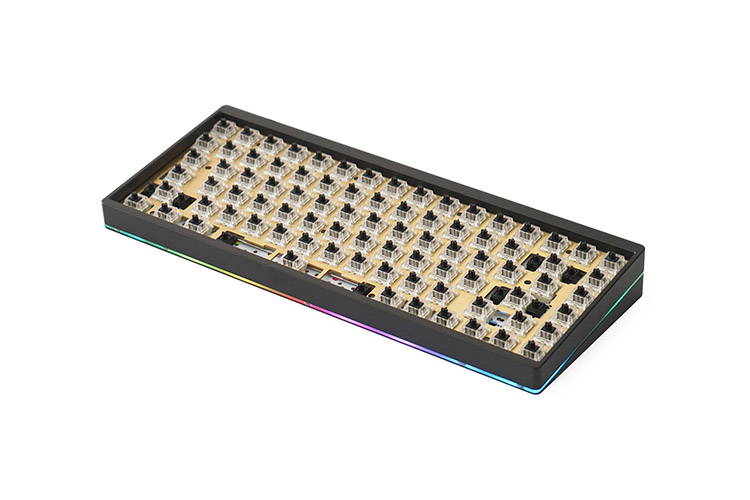
The increasing popularity of the custom mechanical keyboard hobby has helped spawn different keyboard sizes and layouts that were previously not available in prebuilt keyboards. One example that has been gaining popularity in the keyboard scene is the 75% keyboard.
In a nutshell, the 75% form factor is basically a more compact version of the TKL design. There are several modifications which include the reduced space between the alpha keys and the F-keys, as well as the repositioning of the arrow keys and the home cluster.
The arrow keys are now directly below the enter key, and the home cluster is placed vertically beside the backspace and enter keys. Also, to accommodate the positioning of the arrow keys, the right shift keycap has been reduced from 2.75U to 1.75U.
Unlike full-size and TKL keyboards, there is currently no universal way of doing 75% keyboards. Some keyboards, such as the KBDFans KBD75, have all the keys crammed, while the Glorious GMMK Pro features an exploded 75% layout.
This means that the customizability of the case and plate material will highly depend on the manufacturer. Most of the parts on these keyboards are pretty much proprietary to that specific model.
75% keyboards are visually more exciting than most TKL keyboards. Manufacturers and custom keyboard builders have more options when it comes to 75% keyboards.
Some keyboards such as the GMMK Pro and the Satisfaction75 have unique features such as the rotary knob. If you are looking for something different without sacrificing functionality, then 75% keyboards are a great option.
60% Keyboard
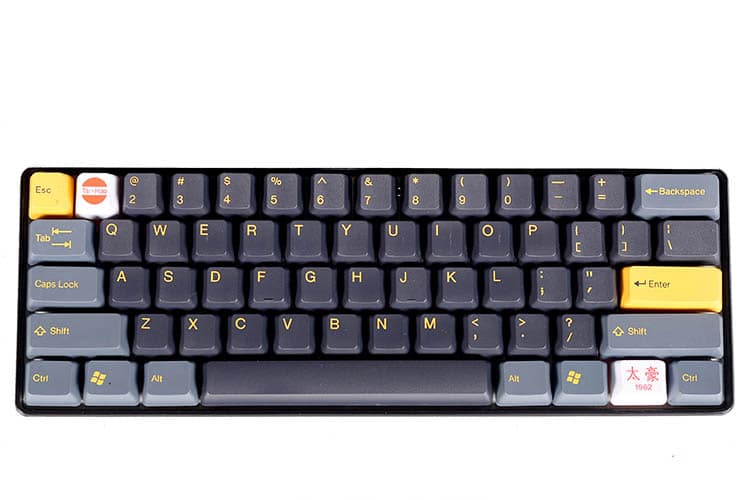
One of the most popular sizes in the custom mechanical keyboard hobby is the 60% form factor. These keyboards are significantly smaller than TKL keyboards and usually only have 61 keys. The idea here is to further remove unnecessary keys to give the best size, ergonomics, and efficiency as possible.
The 60% form factor removes the F-keys, the arrow keys, and the home cluster. All that is left are the alphas and the modifiers.
Despite missing a lot of keys, 60% keyboards are still highly functional. They are great for typing since you aren’t missing any crucial keys. They are also great for gaming since your keyboard won’t interfere with your mouse movements.
Of course, all the missing keys can still be accessed thanks to the multi-layer functionality that most 60% keyboards have. The arrow keys, the F-keys, and the home cluster are usually scattered in various parts of the keyboard and can be accessed using a function key.
Also, most 60% keyboards are programmable, meaning you can choose where you want these secondary functions to be assigned. Some common bindings include the F-keys on the number keys, the arrow keys on WASD, and delete on backspace.
60% keyboards are also very flexible in terms of customizability. They are compatible with most keycap sets since all the keys have standard keycap sizes. Some 60% keyboards such as the Tofu 60 are compatible with the “? Layout,” which reintroduces the arrow keys but moves the “?” key below the enter key, shortens the shift key to 1.75U, and removes some of the right modifiers.
Also, the parts of most 60% keyboards are pretty much standardized. This means that you can pick up different cases, plates, and PCBs for your keyboard build.
However, 60% keyboards aren’t for everyone. Some users who need the arrow keys and the home cluster will not be happy with 60% keyboards. Also, the learning curve, especially with utilizing different layers, might be too steep for some.
But nevertheless, the 60% form factor remains to be one of the most popular in the custom mechanical keyboard hobby. In fact, mainstream keyboard brands such as Razer and Corsair have been adapting and have released their own versions of the 60% form factor.
65% Keyboard
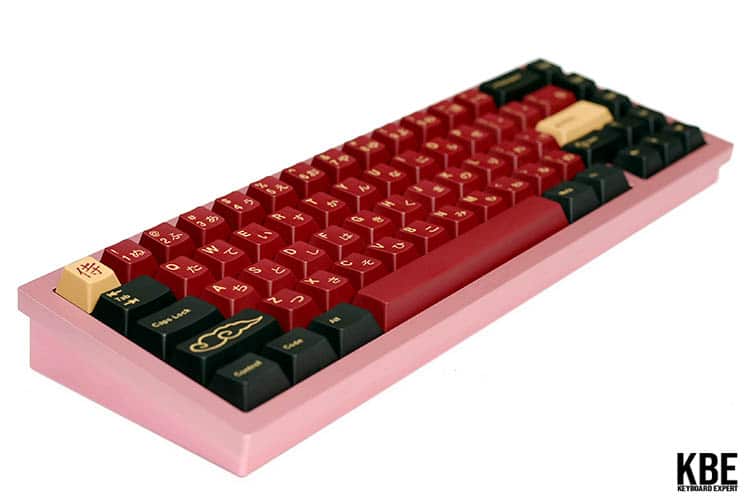
If you love the form factor of 60% keyboards but can’t live without arrow keys, then this one’s for you. 65% keyboards are virtually the same as the 60% form factor. However, it addresses the main issue of 60% keyboards by bringing back the arrow keys. Additionally, you also get four home cluster keys, which can usually be remapped to whatever key you like.
This layout has become one of the most popular keyboard sizes due to how well it combines size and functionality. Popular gaming companies such as Razer have taken notice and are now releasing their own 65% gaming keyboards.
It is slightly longer than 60% keyboards. However, it is still a relatively small keyboard compared to TKL and 75% keyboards.
Again, you will still need to utilize different layers to compensate for your missing keys. However, the learning curve won’t be as hard as 60% keyboards since 65% keyboards pretty much offer complete functionality right off the bat.
The only downside of 65% keyboards is their proprietary design. Just like 75% keyboards, there is no standard when it comes to 65% keyboards.
This means that you can’t just swap out the parts of your keyboard and purchase aftermarket parts. Also, you will have to make sure that your keycap set has a smaller right shift (1.75U) to fit your board.
Non-Standard Keyboard Sizes
40% Keyboard
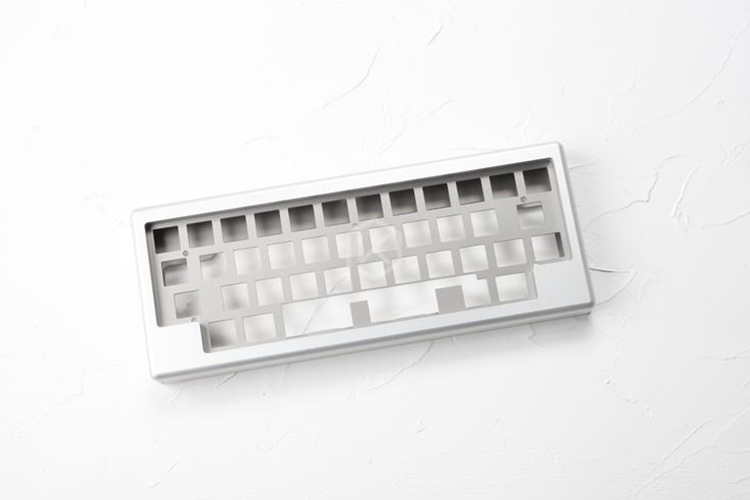
If you are looking to further downsize from a 60% keyboard, then one of the smallest ones that you can get is the 40% form factor. These keyboards only have the bare minimum and only feature the alpha keys and some modifiers.
To give you a better idea of what this looks like, this layout is the same one as the default keyboard of your smartphone. It is still functional for typing, everything use, and gaming. However, they may be unbearable for those who need all those special keys.
40% keyboards are more of a novelty keyboard. These keyboards are meant to be tinkered around with. You will need to experiment with different layers in order to make these work for your use case.
Despite being impractical as a daily driver, there are plenty of use cases for 40% keyboards. You can use these as a secondary or a portable keyboard since they have a very small footprint.
You can also use these keyboards as a testing platform for different switches. Since a 40% keyboard-only contains a few keys, you do not have to spend as much on switches that you are not sure you will like.
One of the major downsides of 40% keyboards is that not a lot of manufacturers are producing these kinds of keyboards. Since these keyboards currently do not have the same kind of demand as other sizes, you won’t be getting as many options.
1800 Compact (100%) Keyboard

The 1800 compact layout is an alternate take on the full-size layout. It is made for enthusiasts who wish to have a more compact keyboard but do not want to sacrifice the functionality of full-sized keyboards. The main difference between 1800 and full-sized keyboards is the spacing between each key.
Just like with other keyboard sizes, the implementation of this layout varies between different manufacturers. Some prefer to eliminate all space which makes the keyboard a bit cramped, while others try to add a bit of spacing. But overall, most enthusiasts aren’t too fond of this layout since all of the keys are too cramped.
Aside from having a slightly different look, 1800 compact keyboards do not offer a lot of benefits over other keyboard sizes. Of course, some users may be attracted to having all of the keys that they need in one compact keyboard. But for most users, we highly recommend checking out the other keyboard sizes.
80% Keyboard
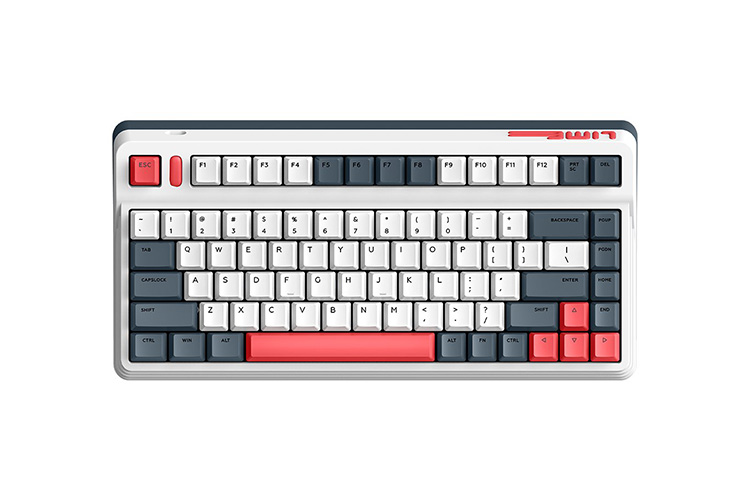
The 80% form factor is pretty much just a variation of the 75% form factor. The idea here of having a compact layout is very similar to 75% keyboards. However, the spacing between the alphas and the F-Keys is more similar to how TKL keyboards look.
These keyboards are for those who enjoy the size of 75% keyboards but find them too cramped. The 70% form factor also gives a distinct look that is unique from the other keyboard sizes.
The only downside with these keyboards is that they are not as widely available as the other keyboard sizes. And since they aren’t as popular, you are less likely to get features and mounting styles such as gasket mount.

The KBE team is dedicated to sharing our knowledge and creating useful resources about computer keyboards. This article was written as a team collaboration, combining our knowledge and years of experience using, building and modding keyboards. Meet the team here.
